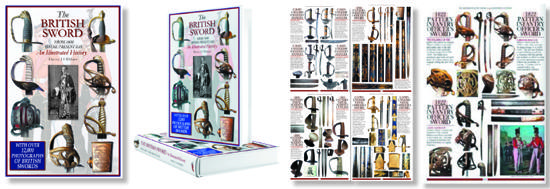
THE 1882, 1885 AND 1890 Pattern cavalry trooper swords can be distinguished by their varying lengths, blade types and scabbards (this pattern saw the first adoption of fixed suspension rings). The fact that we see three changes of pattern in only a few years highlights the crisis experienced within the British Army to find a sword both durable and effective.
The 1882 Pattern is found in both ‘Long’ and ‘Short’ versions, with the relevance of having two specific lengths a matter of debate. The general consensus is that the longer sword was for use by the heavy cavalry regiments who tended to employ taller men. This seems quite a strange theory, and the introduction of these two lengths has never adequately been explained. The pattern is easy to recognise because of the distinctive Maltese Cross motif cut into the guard. It was purely ornamental and served no practical purpose.
The blade is slightly curved, with a flat back and double-edged towards the spear point. The grip is made up of chequered leather strips, riveted through the tang and is identical to the 1864 Pattern.
Many examples are also marked on the blade to the German sword maker, Weyersberg, Kirschbaum & Co., who impressed their knight’s head logo and company name to the blade ricasso. Kirschbaum took on a large contract to produce these swords as British companies were unable to fulfil the initial orders, although Mole and Son and the R.S.A.F. Enfield, shared around 11,500 of the contract, with Kirschbaum taking the remaining 18,000.
Experience of the sword on active service was not promising, with more complaints about the softness of the blade and its propensity to bend and break. In a typical response, a Committee was established to look into this problem. Regiments were asked for their opinions and the answers included the need for a longer blade. Interestingly, some of the private manufacturers of the sword blade (including Mole & Son) were criticised for using lower quality steel and differing methods of hardening.
It was produced in relatively large quantities and remained in British Army stocks for a considerable time, with many carried by Yeomanry Regiments long after it was superseded by subsequent patterns.
© Harvey Withers Military Publishing, 2024
Taken from The British Sword – From 1600 to the Present Day – An Illustrated History by Harvey J S Withers – 12,000 full colour photographs – 884 pages
For more details please click on the images.






















